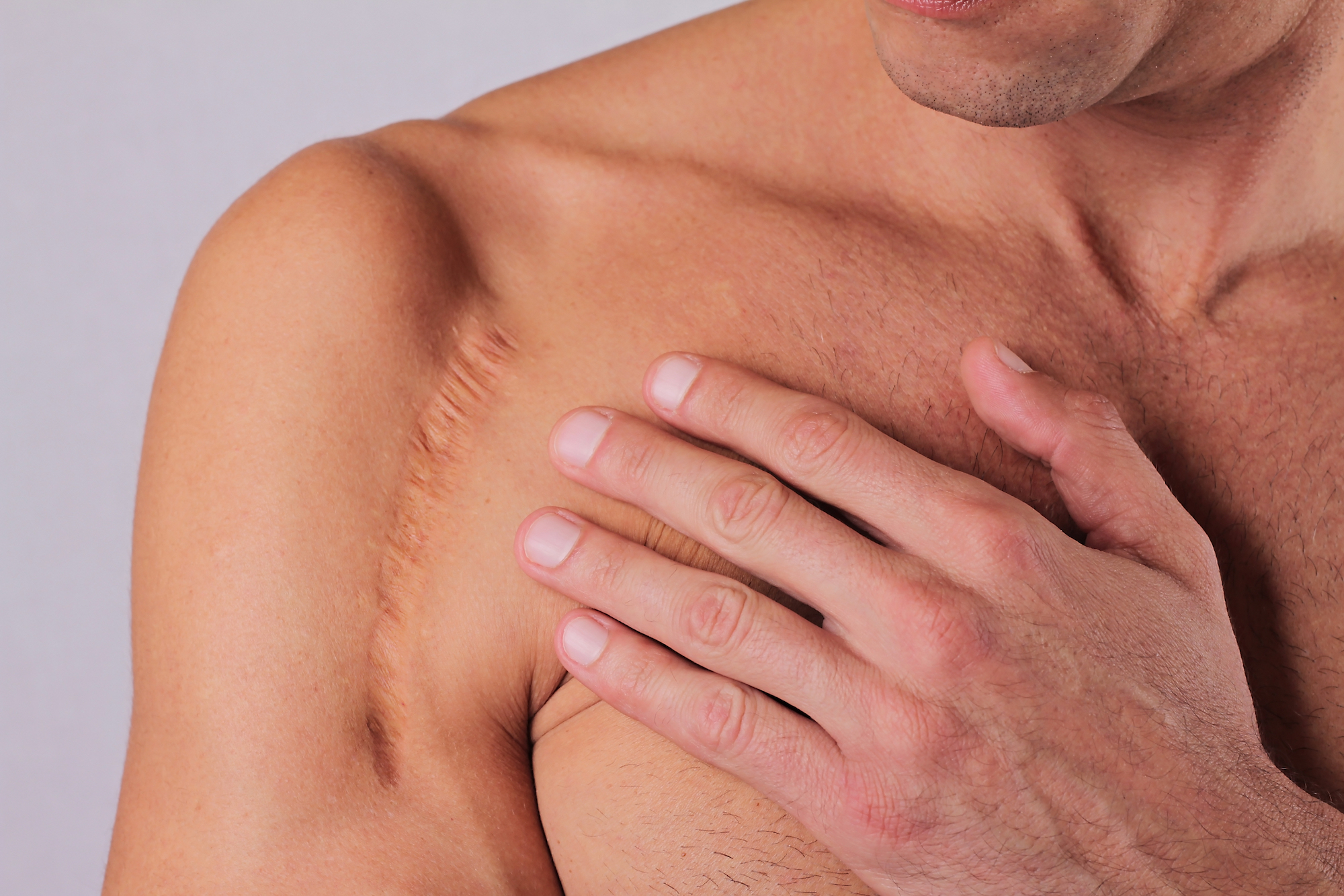Do Scars Impact your Movement?

I recently posted a video on my social media demonstrating some manual scar work on an athlete with existing shoulder pain. This athlete has been experiencing shoulder pain for more than 8 years and has not improved with any other modality such as cortisone injections, deep tissue massage, dry needling etc. Upon assessment, I noticed a quite large scar on his elbow from a past motorcycle accident! The accident occurred approximately 10 years ago and stated that ever since the incident, his right shoulder has been in pain, leaving him with inability perform at work as a construction worker nor able to lift weights in the gym as he would like.
I took the time to first start with assessing his scar and how that would possibly impact his shoulder movement and pain levels. I applied light touch to the scar with my fingers and I would pull the scar in 8 directions (up, down, left, right, diagonal up left, diagonal down left, diagonal up right and diagonal down right). While moving the scar within these directions, I noticed how restricted it felt pull it down and right. I held the scar in that position and had the athlete re assess his shoulder movements and his pain levels. The athlete not only noticed dramatic increased range of motion but also pain was completely GONE!! I was astounded as well but then again, that neurology. The only tool to use in these instances would be to use Kinesiology Tape that would anchor the scar in that direction and keep it in that position for more that 50-70 hours in total (laws of neuroplasticity)
So how the hell does a scar impact pain and movement?
We must understand that scars play a HUGE role to your brain, that includes tattoos! They can create potential threats to the brain and as a response, the brain will either give you loss of range of motion and pain or even both. The skin contains many receptors called Mechanoreceptors! These receptors convey information to the brain on various sensations such as light tough, hot/cold, sharp/dull, vibration, pressure, stretch and more! The brain the receives this information for processing. A scar though completely disrupts or even destroys the majority of these receptors so now the brain has a very blurred map of what’s going on within that area of the scar. If the brain doesn’t receive the appropriate input from these receptors, then as a response, the brain will create pain and stiffness not only to the joint where is located but also in other neighboring joints as well! In this athlete’s case, the scar was located on his elbow, but his complaint was shoulder pain.
In BodMechanic Live, I’ve extensively shown the technique I use for scar manipulation to a great degree. When it comes to scar work, I first opt to check if the scar needs to be pulled in a specific direction to stimulate any of the “stretch receptors” that may have been damaged. I then assess the “end-feel” of all 8 directions as mentioned above and look for any barriers that feel hard for me to pull as opposed to all other directions. I then hold down the scar in that restricted direction and re assess pain and movement levels. If the symptoms increase, then I usually pull the scar away from the barrier. Any direction that creates a positive outcome should be kept there with the use of Kinesiology Tape for many hours until plastic changes occur in the brain (neuroplasticity).
This is what’s so phenomenal about the brain! Even though the athlete was experiencing shoulder pain, the actual source of it was from the scar located on his elbow! In a biomechanical level this make not make sense but in a neurological level, this makes great sense! Its all about minimizing any potential threating inputs to the brain! A scar can be a huge threat if left untreated. The same goes for tattoos! Tattoos are 1000 stabs/min done on your skin and slowly (and painfully) altering all the mechanoreceptors of the area! Wouldn’t you think that could possibly create be a potential threat to the brain?
The take home message is this: If you are currently experiencing any pain or discomfort in any area of your body, take the time to assess any of your scars and notice if that creates a change to your pain levels! Obviously, a skilled professional would be most appropriate to examine this, but you can definitely try this for yourself.
Subscribe to BodMechanic Live to check out the Scar Therapy presentation or schedule a FREE online consultation so this way we can talk more!
Until then, stay safe!
CONTACT FORM
If you have a question or need assistance, please send us a message using the form below. Please be as descriptive as possible when submitting your message.